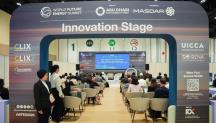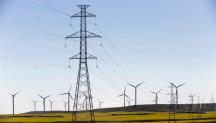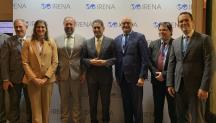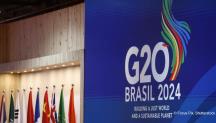

IRENA to Integrate Iraq’s New Solar Map into Global Atlas
Newsletter
Ensuring a stable, secure and cost-effective supply of power to a growing population has been central to Iraq’s post-conflict economic development. Regular and often lengthy electricity black outs had become commonplace in a country that generates close to 100 per cent of its power generation from fossil fuels. These supply issues coupled with the need to stimulate new streams of economic growth prompted a rethink of domestic energy policy that gave birth to a new national energy strategy, featuring an ambition to generate 2.2 GW of renewable energy by 2020.
The strategy has now received strong support from the International Renewable Energy Agency (IRENA), who will integrate the country’s new solar resource map – developed in coordination with the United Nations Development Programme (UNDP) and the Regional Centre for Renewable Energy and Energy Efficiency (RCREEE) – into its Global Atlas. The solar map will help to identify Iraq’s best solar resources, informing and facilitating renewable energy planning across the country.
“Iraq has tremendous potential to develop its own domestic renewable energy resources and its government has identified solar development as a clear, long-term priority,” said Henning Wuester, Director of Knowledge, Policy and Finance at IRENA. “By integrating the country’s new solar data into our global database we can support this objective by showcasing Iraq’s potential to the global renewable energy investment and development community, for whom our Atlas has become an important and reliable resource assessment repository.”
IRENA’s Global Atlas includes over 2000 renewable energy maps, integrated into a single and consistent platform covering solar, wind, bioenergy, geothermal and marine energy all over the world. Nearly 200 000 users actively use the open and freely available platform’s range of applications, from mapping energy potential, to performing advanced renewable energy-site prospecting.
“Iraq has tremendous solar energy potential because it enjoys more than 3000 hours of bright sunshine per year and an average solar radiation of about 5 kWh/m2/day,” said Dhia Baiee, Deputy Director General, Renewable Energy Directorate at the Ministry of Science and Technology in Iraq. “Integrating the Iraqi solar map into IRENA's Global Atlas will support our work by strengthening investor confidence in Iraq’s promising resource potential.”
As well as highlighting solar resources, the map will also offer investors and developers key information about land availability, populated areas and grid access. Following this, IRENA will work with the Ministry of Science and Technology to undertake a Renewable Energy Readiness Assessment (RRA) report, which will serve as a basis for the creation of a long-term renewable energy deployment roadmap, feeding into the wider regional Pan Arab Clean Energy Initiative.
IRENA’s support will also include conducting geospatial analyses that combine key parameters, such as resource quality, transmission grid distance, population density, topography and protected areas to deduce highly suitable zones for development, and provide indicative estimates of the technical potential. "IRENA, in its role as a centre of excellence for knowledge and innovation and as a source of policy advice and best practice, is playing a strong role in the success of Iraq’s long-term renewable energy programme,” continued Mr. Baiee.
“IRENA had previously supported Iraq by integrating the Iraqi wind maps into its Global Atlas and by adding the solar maps, together with performing the renewable energy readiness assessment, we hope to build a truly reputed investment programme that underpins both our energy and economic objectives.”




